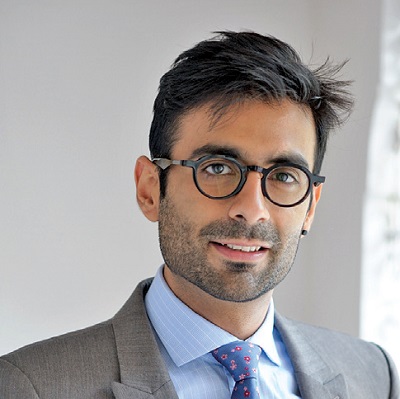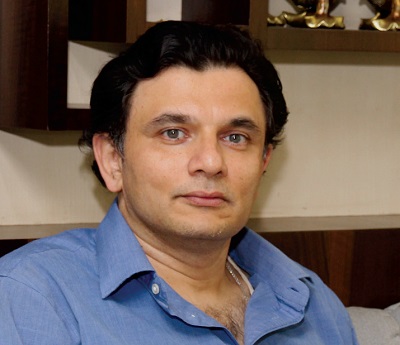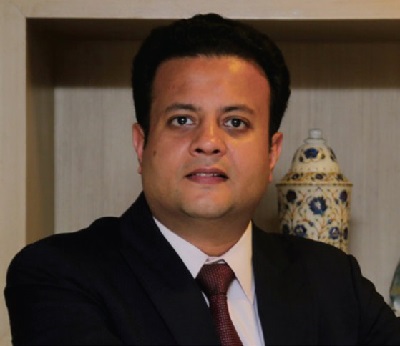The importance of location

The way people are shopping is definitely changing. Though the omnichannel model facilitates a stronger brand presence resulting in more conversions, the sheer convenience and inventory that e-commerce gives its shoppers has changed the retail landscape over the years. And let’s face it, the economy may be down but commercial real estate is booming. Buying and renting commercial spaces is an expensive proposition and being judicial and understanding the whats, whys and wherefores before choosing a store location or thinking of opening that second store is more imperative now than before says Vijetha Rangabashyam
In a company podcast, Dan Bane, CEO of Trader Joe’s, one of America’s biggest national chain of neighbourhood specialty grocery stores said, “We won’t open a store just because we can.†Half a century, an ownership transfer and hundreds of stores later, Trader Joe’s strategy remains watertight, ensconced with careful considerations of market reality, population density, average income of the people in the neighbourhood, education and other factors. In 2013, Swedish ready-toassemble furniture company IKEA decided to enter the Indian market around the time when Foreign Direct Investment rules were eased a bit. The initial plan was to set up shops in Delhi, Mumbai and Bengaluru. But after a well wisher from Hyderabad made a case for the city with thirteen strong points centering around its demographic, economic, human resource, commercial and government advantages, IKEA signed an MoU with the city. After a year, the 4-lakh sq-ft Hyderabad store has attracted over 4 million visitors and the strategy of the brand in terms of retail expansion has changed a little – they are more keen on opening smaller stores and debuting online, like they have in Mumbai.
Every business is different. What worked or might work for IKEA or Trader Joe’s may not work for a jeweller or any other business owner who deals in high-value goods, but at the core of any business, location is key and the location you choose will have a great impact on the walk-in traffic, future sales, its ability to further grow and more.
Location, Location & Location
In today’s highly competitive retail environment, especially where a majority of the companies are on survival mode, location is one of the most important factors in determining whether or not a brand is future-ready and future-proof. The primary objective of any retailer is to maximise sales and a store location is very important to not only attract the desired audience but ensure there is substantial Point of Sale (POS). “Store location actually defines the quality and quantity of footfall for any retail sector. While a store in a popular jewellery highstreet like T.Nagar in Chennai or Hughes Road in Mumbai attracts targeted footfalls, a store in a busy market area attracts buyers with diversified socio-economic profiles and interests,†says Ahammed MP of Malabar Gold & Diamonds. With a strong retail network of over 250 stores, aggressive retail expansion has always been part of Malabar’s modus operandi but location has been the driving force behind all of the store openings. “Footfall has always been a critical aspect of retail when it comes to driving sales and enhancing conversion rate. The popularity and visibility of a store are to a greater extent determined by the volume of footfalls it attracts. So, location plays an extremely big role in driving footfall to the store. At the end of the day, quality footfalls create quality retail opportunities,†adds Ahammed.
Â

The scope of the word location, however, is broad. While it is easy to use words like “prime location†loosely, there are many nuances involved while choosing the right location for your business. “In a mature market like the U.S., where high street shopping is concerned, connectivity is really good. In India though, connectivity was poor until a few years ago and today it is mediocre. So location alone is not important, in a country like India, location with good parking is important,’ says Pratap Kamath of Bangalore based Abharan Timeless.
If you have the right location, then little effort has to go into building the rest of the brand, believes Milan Shah of Surat based Kalamandir Jewellers. “There are three important factors in any retail business. Location, location and location. If you have figured out the right location, the rest of the peripherals can be worked upon with minimal effort.†On an average how many consumers visit the area to shop? Proximity to residences and accessibility through public transport Costs involved in leasing/ owning the area along with maintenance costs like electricity etc. Does it have ample parking, does the area allow for enough moving around etc. Size of the catchment area Accessibility & convenience Occupational costs Facilities Amrapali, which has patronage across the world, has an interesting strategy when it comes to retail expansion. The brand has a presence in high-end, luxury hotels and standalone stores in upmarket areas. It also has tie ups with high-end brands like Goodearth (in India) and Harrods (in the UK) as it shares the same target audience with these brands. “Location is the most important factor when opening a new store. We have tried to use prominent locations for our brand. Our store in Juhu is right opposite JW Marriott and next to Starbucks. This is ideal for us as it attracts foreign consumers who could be staying at the hotel and even locals who will go to Starbucks in the vicinity. We also have a store in Taj Mahal Palace hotel which is one of the most prime locations in Mumbai. In Delhi, we are located at Khan Market, another popular area. We also have a presence at airports, which I feel is one of the ideal places to shop. If you have a layover or are waiting for a flight, you’re kind of trapped and what most travellers do is shop or eat. Even for last minute gifting, the airport is a great place to buy gifts for your loved ones,†says Tarang Arora.
Â

The Nitty-Gritties
There are many questions to ponder over while choosing the location for your store. But the first thing you have to ask yourself as a business owner is what kind of brand you want to be and more importantly who your key demographic is. Mumbai based WHP Jewellers which began its journey in 1909 has come a long way with 12 stores in the city and more in smaller towns of Maharashtra. “Demographics of the core customer, area of the retail space, population of that particular area, how accessible that area is and most importantly preference of the customers – these are the main factors. So as a brand, we do a dipstick study taking all these factors into consideration before choosing any location for our store,†says Aditya Pethe.
Working towards building a store in the best possible location is important but what kind of area it is has to be one of the main considerations. For Kalamandir, the entire surrounding is a major factor. “What is the market around like and what shops do we have around, not just in terms of jewellery but also apparel because every area is different. But who my neighbours are is something we really give importance to. It doesn’t matter how many jewellers are concentrated in one area, I still want to be in the thick of that competition. But if I am entering a new area, I have to do research from scratch and there are still no guarantees,†adds Milan.
Pratap however disagrees, “When we sat down to decide our location, we didn’t want to be around other jewellers. Personally, we didn’t want to be seen amidst other jewellers and this is a trend now. Today, most of the large format chain stores always look for a place where other jewellers are present. A Kalyan always wants to be next to a Tanishq or a Joyalukkas. Most people believe in being in the hub and may be there is undue advantage to that but for us accessibility and parking have been the main factors.†Abharan Timeless has two stores in Bangalore one in the heart of the city and one in West Bangalore. While the first one is on a main road, the second is located on a service road, but the ambiance and parking is great. “People don’t mind travelling the extra distance because of the convenience we offer in that branch.â€
Whatever the case may be and depending on your expansion strategy, thorough research and feasibility study on a particular location are fundamental. “Being an organised jewellery retail chain of both national and international repute, our brand enjoys a certain level of trust, affinity and acceptance with the jewellery buyers in the country. There are some standard factors that we still consider while choosing a location such as accessibility, prominence of that location, consumer demographics, competition proximity, location cost, strength and depth of the catchment areas adjacent to that location, etc., We are now exploring locations which can take the story of Malabar Gold and Diamonds forward. As we have embarked upon the journey to strengthen our retail presence further, we’ll choose locations, which will give us broader jewellery retail bandwidth, first-mover advantage and better return on investment,†says Ahammed.
Neighbourhood is equally important for Indore based DP Jewellers. “Surrounding atmosphere and the kind of jewellers present in a particular locality are important for us,†says Vikas Kataria.
When Jalgaon based RC Bafna opened its store in Aurangabad, they chose to be situated on a highway where no other store was located within a 2 km radius. Today the location is flooded with jewellery stores. “If a customer is buying a high ticket product like jewellery, he or she has some basic expectations. They want ample parking space, someone to greet them etc. They want to take their time and don’t want to rush into it. Our stores are 20,000 – 25,000 sqft big in size – so while location is important, if the customer finds experience to be more convenient then he will travel,†says Sidharth Bafna. For RC Bafna it has always been about the target audience. “You can’t think beyond a radius of 5 km. Your target audience comes from this surrounding.†Having said that he believes that with high value products like jewellery, people like to see different options. “Customers should get value for their money. When competition is close by, they have the option of hopping over to another store and looking at options. But by the same token, if your service and policies are not up to the mark, your client is going to look elsewhere for his jewellery.â€
Â

To Expand or not to Expand
This question is relevant in today’s scenario more than ever, with economic volatility coupled with changing consumer preferences and digital disruption at its peak. With skyrocketing per sqft price for commercial spaces, companies are becoming all the more prudent in their expansion plans. In the U.S. luxury retail is adopting a different strategy and this in some cases does not reflect on their performances. Dialing back in light of a changing retail production model that focuses more on digital sales is a trend we are witnessing in the west. Ralph Lauren, Saks Fifth Avenue, Henri Bendel and Barney’s have all closed many stores. Lord & Taylor on the other hand announced the sale of its flagship store to WeWork and partner Rhône Capital. In India though while most brands are adopting a wait and watch approach given the market situation, some of them still believe in an aggressive retain expansion plan. “Retail expansion is related to the vision and growth prospect of a brand. Sometimes, due to certain economic and market scenario, a brand restrategises its expansion plan. But, expansion still takes place. In jewellery retail, offline or brick-and-mortar, retail still commands significant revenue share compared to that of online retail. Because, jewellery buyers in India still prefer the touch-and-feel aspect while loosening their purse strings. So, for a brand which aspires to grow, retail expansion through opening stores makes more sense,†quips Ahammed.
Simply expanding alone doesn’t cut it as consumers are more conscious about quality than quantity. “Number of stores can definitely make an impact on the consumers but I feel nowadays quality is more important with quantity. To maintain and constantly upgrade the quality and venturing into new markets constantly are what make your brand a successful one according to me,†believes Aditya. Having opened many stores in Gujarat, Milan believes now is not a great time to expand, especially with rising gold prices. “Times are not good. The big corporate brands are expanding of course. But what clients want is also changing, they prefer conceptual jewellery. Big jewellers sell products and not stories. So for them it is easier to open stores as they deal with mass-produced stuff. For us, design value is important and we can’t keep expanding without thought. Even the big brands will eventually have to think of creating concept-based jewellery,†he says.
Business volumes have definitely come down and with gold price becoming dearer, getting people to walk into your stores is definitely a challenge. “It is going to be very difficult for retailers to sustain. This is actually the time for consolidation with prices having gone up by 25 – 30 per cent. Proportionately, sales have also dropped. May be a year ago, expansion was the way forward but now I think we need to consolidate,†asserts Prathap. Sidharth looks at the current scenario in a different light. “People’s budgets haven’t gone up with the hike in gold price. They get lesser gold for the price they are paying today, so the volumes have decreased. The only way to make up for the lack of volumes is by opening new stores and reaching newer audiences. You can’t push your products to the same customer – you have to find new markets. So expansion is definitely the way forward.â€
Metros, Tier II & III – The Difference
Every city or town is different. Tending to each of these markets also has to be different and hence factors differ while choosing the location for metros versus smaller towns. “Metro markets are very complicated even for us to understand, which is why we haven’t really entered the likes of Mumbai yet. People from South Mumbai will not travel to suburbs no matter what. In the smaller towns or cities, the aspiration levels are much higher. A small town family would love to go to a big city and shop So if you build equity that is as good as the ones in the city, then they will come and shop in your store said Bafna.â€
Agriculture plays a very important role while choosing a location in smaller towns, as farmers constitute a major chunk of the clients. “Surrounding is important. What crops are primarily grown in the surrounding villages/towns is a very vital factor. We also study the potential growth of the market in the future,†adds Vikas.
Â
Be the first to comment